Explore the work of famous modern photographers in this article, showcasing their unique visions and compelling imagery. From urban scenes to abstract compositions, these artists have left a significant impact on the world of photography. Dive into their stories and discover the power of their visual storytelling.
To me, photography is an art of observation. It’s about finding something interesting in an ordinary place… I’ve found it has little to do with the things you see and everything to do with the way you see them.
Elliott Erwitt
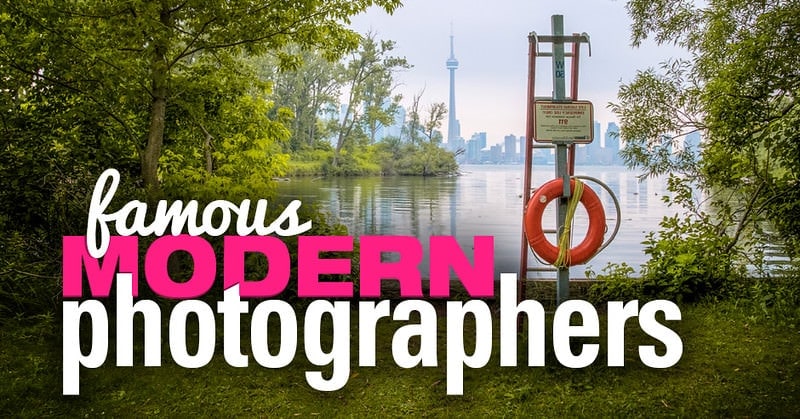
You can look at a picture for a week and never think of it again. You can also look at a picture for a second and think of it all your life.
Joan Miró
Famous Modern Photographers
Here is a list of 14 famous modern photographers who have significantly impacted contemporary photography.
1. Alexey Titarenko (1962- )
Alexey Titarenko is a highly regarded modern and contemporary photographer celebrated for his evocative, impressionistic images that explore urban life, the passage of time, and the human condition. Born on November 25, 1962, in Leningrad, Soviet Union (now Saint Petersburg, Russia), Titarenko discovered photography at a young age, experimenting with different techniques and styles.

His work, characterized by long exposure times and intentional motion blur, creates a sense of movement and transformation within the frame. Titarenko often captures urban landscapes and city scenes, showcasing the flow of people and objects and their interactions with their surroundings. His images are recognized for their rich tonal range, atmospheric quality, and careful balance between abstraction and representation.
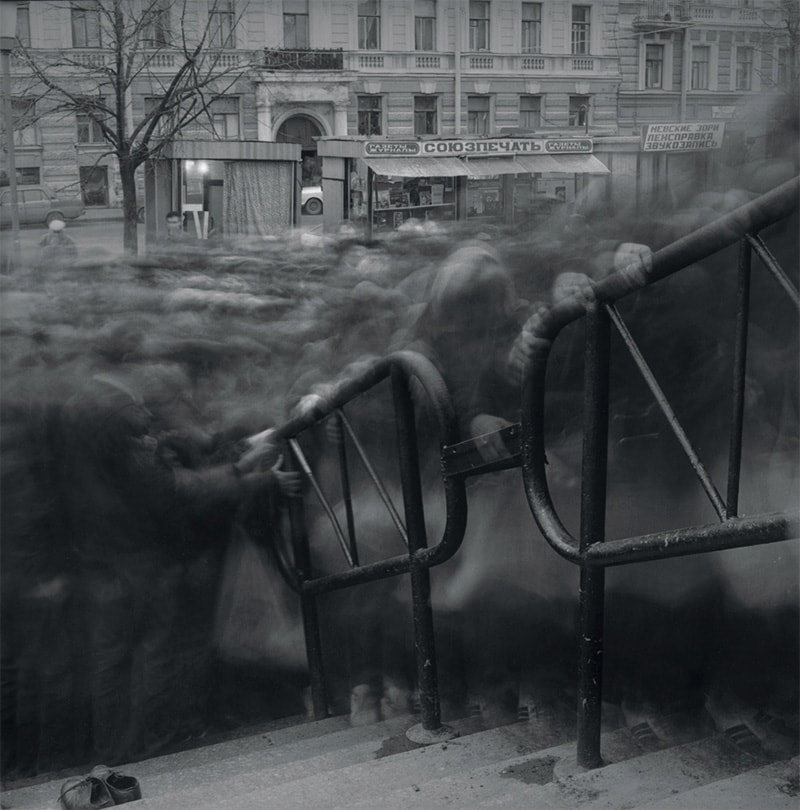
Titarenko’s artistic style is often described as expressive and impressionistic, focusing on his subjects’ emotional and psychological aspects. Drawing inspiration from Russian avant-garde artists like Alexander Rodchenko and Kazimir Malevich and European Dada art, Titarenko’s work conveys the complexities of the human experience through visual language.
A defining moment in Titarenko’s career came at the age of 15 when he became the youngest member of the independent photography club Zerkalo. He later graduated with honors from the prestigious Department of Cinematic and Photographic Art at Leningrad’s Institute of Culture.

One of Titarenko’s most iconic work is “The City of Shadows,” a series of images that explore urban spaces in the aftermath of the dissolution of the Soviet Union in 1991 and 1992. Beginning with the train system as the primary focus, Titarenko captures the symbolic human condition of ordinary people. He utilizes long exposures and intentional camera movement, creating relevant images in his social photography work today.
Titarenko’s meticulous approach to his craft involves overseeing every aspect of his work, from initial concept to printing, ensuring the highest quality in his final pieces. Despite facing limitations in resources while working on “City of Shadows” in the Soviet Union, Titarenko transformed these constraints into creative opportunities, producing an impressive body of work.
His work has been extensively exhibited in museums and galleries worldwide, and his images are housed in major collections, including the Museum of Modern Art in New York, the Museum of Fine Arts in Houston, and the Getty Museum in Los Angeles.
In the early 2000s, Titarenko emigrated to the United States, where he continued to develop his unique style and expand his body of work. His move to the U.S. allowed him to access new opportunities and resources, and it has significantly impacted the direction and evolution of his photography.
To explore Titarenko’s work further, you can visit his official website. If you’re interested in investing in a book, “The City is a Novel” is highly recommended, as it includes “City of Shadows” and other works from cities like Havana and Venice.
Alexey Titarenko Books
Alexey Titarenko On the Web:
– Official website
– Nailya Alexander Gallery
– Soviet Union’s Scary City of Shadows by Alexey Titarenko
2. Chema Madoz (1958 – )
Chema Madoz, born Jose María Rodríguez Madoz in Madrid, is a highly acclaimed modern photographer recognized for his captivating black-and-white surreal images. Initially considering himself an arranger, Madoz’s journey in photography has been guided by his unique vision and deep appreciation for the transformative power of ordinary objects.

Madoz’s artistry lies in the simplicity of his images, which are deceptively easy to appreciate. Through a thoughtful combination of elements and shapes, he crafts visually strong images that exude a unique personality and poetic force. His work transcends traditional categories of surrealism and abstraction, serving as visual metaphors that encourage viewers to perceive the world in new ways. Madoz has a deep affection for the possibilities that objects can offer, and his carefully arranged compositions—most of which he photographs using medium-format film—are a testament to this belief.

Madoz’s creations are more than just surrealism and abstraction; they serve as visual metaphors that invite viewers to see the world in new and unexpected ways. His love for the potential of objects is evident in his arrangements, which he often photographs using medium-format film, showcasing his belief in the power of photography to bring his imaginative visions to life.
In 2000, Madoz was awarded the National Photography Prize by the Spanish Ministry of Culture. This prestigious recognition acknowledged his exceptional contributions to the field of photography and solidified his status as one of Spain’s most important contemporary photographers.

Madoz’s work is featured in numerous publications and books, including “Chema Madoz: Objetos 1990-1999,” which showcases a selection of his thought-provoking and whimsical images. The book is a testament to Madoz’s dedication to his craft and his ability to transform ordinary objects into extraordinary visual experiences.
Chema Madoz Books
Chema Madoz On the Web:
– Official website
– Chema Madoz — Robert Klein Gallery
– Chema Madoz: PHotoBolsillo
– Chema Madoz: Masterpieces
3. Trey Ratcliff (1971 – )
Born in Dallas, Texas as a self-described warm-hearted, old-school gentleman and explorer with really cool toys, Trey Ratcliff is an urban and landscape photographer who achieves his great passion for high tonal ranges and saturated pictures with HDR development.

Ratcliff’s style is important because he documents his explorations through his camera, giving a completely tangible sense of adventure. He crafts HDR images, and although it is not a style for everyone, his images are stellar examples of valuable and careful consistency.
For me personally, there is only one rule to follow to create beautiful HDR images, and that is to stay inside the thin scope between Tonal Range Enhancement and Unreal Looks. Landscapes crave to be photographed, but they also demand respect in terms of things that can and cannot be done later in editing. Ratcliff feels this respect for nature and aesthetics but still manages to create breathtaking urban and natural landscapes.

Trey Ratcliff Books
4. Iurie Belegurschi (1982 – )
Iurie Belegurschi is a celebrated contemporary photographer known for his breathtaking landscape and nature images, particularly those capturing the beauty of Iceland. Born in Moldova, Belegurschi discovered his passion for photography after moving to Iceland, where he was captivated by the country’s dramatic landscapes and natural wonders.

Belegurschi’s work is characterized by its emphasis on capturing the ethereal and otherworldly aspects of nature. His images often feature the stunning Northern Lights, glacial formations, and expansive vistas that define the Icelandic landscape. His work is noted for its vibrant colors, sharp contrasts, and meticulous compositions that showcase the beauty of the natural world.
Belegurschi’s artistic style is rooted in landscape and nature photography, with a focus on using light, color, and perspective to create images that evoke a sense of wonder and awe. He is adept at utilizing long exposure techniques and working in challenging weather conditions to capture the dynamic and ever-changing beauty of the environment.

In 2013, Belegurschi co-founded the travel photography company Iceland Photo Tours, which offers photography workshops and tours in Iceland. Through this venture, Belegurschi has had the opportunity to share his passion for photography and the Icelandic landscape with enthusiasts and aspiring photographers from around the world.
Belegurschi’s work has been featured in numerous publications and exhibitions, including National Geographic, Lonely Planet, and the Smithsonian. His images have received international acclaim and have helped to establish him as one of the leading landscape photographers of his generation.
Iurie Belegurschi On the Web:
– Iurie Belegurschi – official website
– Iurie Belegurschi – Instagram
– Iurie Belegurschi – Fine Art
5. Sohail Karmani
Sohail Karmani is a part-time photographer from London who is currently based at New York University in Abu Dhabi as a full-time writing professor. His images are both bold and incredibly human as he shows a profound respect for people after refining his social skills to approach complete strangers on the streets, rapidly gain their trust, and earn their permission to photograph them.
He is currently working on an ongoing exploration of his own ancestral hometown of Sahiwal in Punjab, Pakistan. Although he’s only visited his hometown a handful of times, he’s made the most of each visit and has produced stunning portraits that he shares through his Flickr account and on his personal website. The images share common threads of the beauty and humanity of ordinary and kind people.
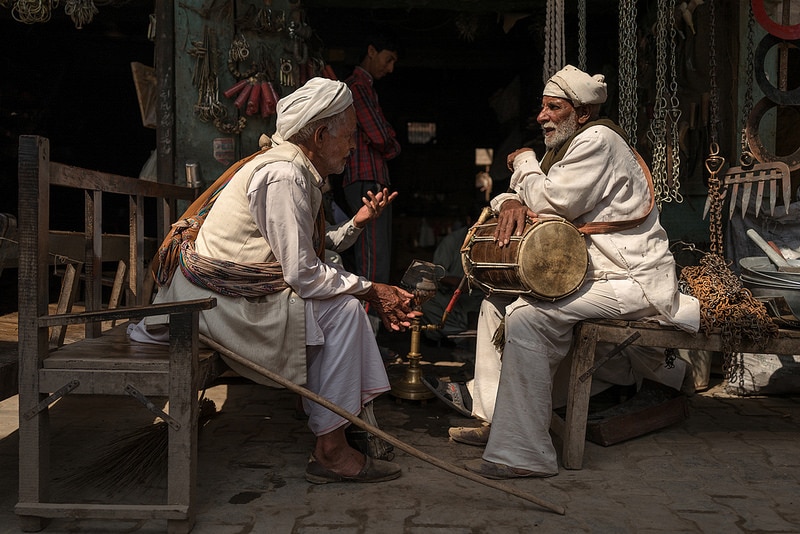
His images have consistency in terms of lighting, composition, and posing. All of them can be categorized as “Street Environmental Portraits”, with a careful composition that maintains the eyes of the subjects as the prime subject in many cases. His scope has hues of candid street photography as well and is currently working on some monochrome conversions of earlier work. His work could be easily compared to the great Documentary Photographer Steve McCurry (he even got the chance to photograph the man with the same consistency of all his work).
Karmani’s images are consistent in terms of lighting, composition, and posing. They are categorized as “Street Environmental Portraits” with a careful composition that focuses primarily on the subjects’ eyes. His work also features the hues of candid street photographers and could easily be compared to the great documentary photographer, Steve McCurry, who he also got the chance to photograph.
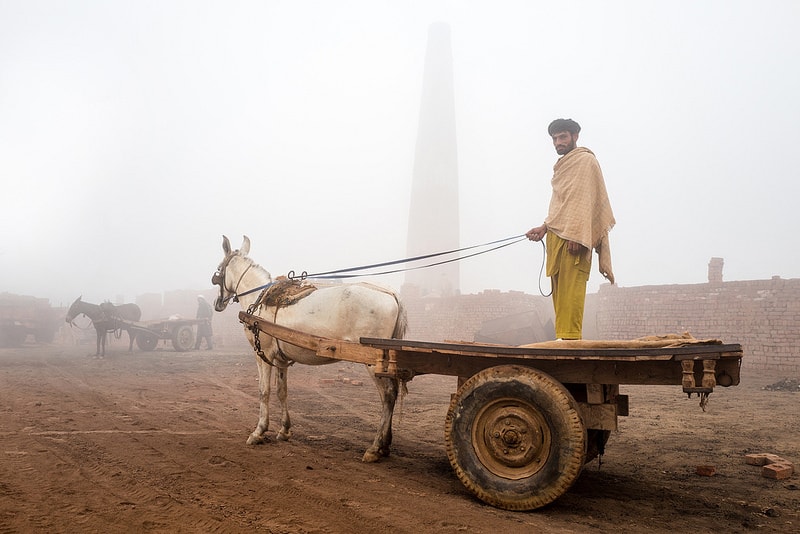
Sohail Karmani Books
6. Marc Adamus
Unforgettable Wilderness Photography—that’s how Marc Adamus describes his own imagery and, trust me, he is absolutely right!

A young landscape photographer currently based in Western North America, Adamus’ love for wilderness is evident in his body of work as a full-time landscape photographer constantly pursuing the wildest nature imaginable at its purest state. His passion for the wilderness has attracted a vast audience around the world and his style is unmistakable as he depicts the most epic moments of true nature.
Marc’s images have been published extensively worldwide in a variety of media from calendars, books, and advertisements to several issues of National Geographic. He seeks to express his own feelings evoked by the locations he visits and explores while attempting to embody the empathy from the viewer’s standpoint toward his experience of being fully immersed in the wild.
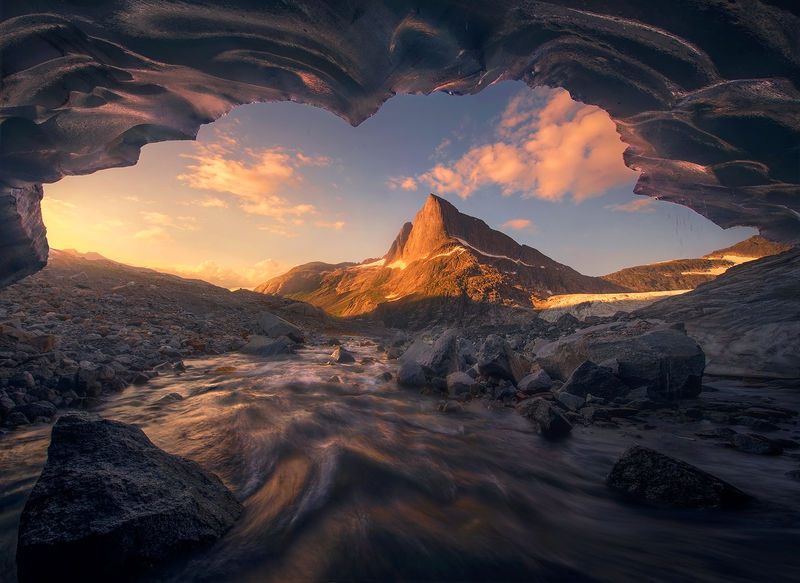
Adamus embodies one true tenet of photography and that is patience. The more patience photographers put toward the sublime pursuit of great landscape photography, the more the landscapes unveil themselves to them. Landscape photography is not the landscape simply waiting for you to capture it in passing, instead, landscapes beg you to forget about the modern world and reconnect with the roots of humanity of sharing life with the wild in an unthreatening manner.
With his work evolving over the years, Adamus has pulled out the best of professional film and digital formats. He currently shoots only in digital and has made a clear statement about the importance of post-processing, much like Ansel Adams did in decades prior. For Adamus and Adams, what happens in the camera is just the canvas for the beautiful masterpiece that happens later in a photographer’s editing workflow.
Of course, the better quality the canvas, the less struggle there is in the RAW development stages of the editing workflow.

Marc Adamus Books
Marc Adamus On the Web:
– Marc Adamus – official website
– A Day In The Life Of Marc Adamus
7. Laura Wilson (1939 – )
Still active today after 40 years in the industry, Laura Wilson might not be the best known but she is one of the finest and most significant American photographers of modern times. She got her start as Richard Avedon’s research assistant for his famous work In the American West, in which he detached from celebrities to focus on ordinary people. Since then, she’s spent the last 25 years documenting present-day cowboys in ranches throughout West Texas and Montana.

Her depictions of these modern-day cowboys are published in four books where she uncovers the strength of these men, their traditions and their code of behavior, all of which are vital parts of their cowboy heritage. The books can be found on her website and include:
- Watt Matthews of Lambshead (1989)
- Hutterites of Montana (1990)
- Avedon at Work: In the American West (2003)
- Grit and Glory: Six-Man Football (2003)
The books are documentary works that reflect her curiosity in exploring a worthy state of men with Avedon at Work documenting Avedon’s creative process, working methods and backstage findings, all of which she uncovered while working as his assistant for six years.
Related: Top Famous Female Photographers
One of my favorite pictures of Wilson is this one, which is a behind-the-scenes snapshot from Wes Anderson’s The Darjeeling Limited, which shows a very charismatic Owen Wilson, who happens to be her son.

Laura Wilson Books
8. John Free
A social documentary and street photographer, John Free is a living legend. Currently based in Los Angeles, his photographic essays range from railroad tramps in California and automobile abstracts to street life in London and Paris. He trusts his love of photography to his Nikon F3 which, for me, is a great example of how important it is to always carry a camera with you because you will never see Free without his trusty camera in hand.
Related: 10 Most Expensive Images Ever Sold
Free has a contagious soul and often shares his invaluable wisdom on his YouTube channel. He has severely critiqued academic systems that charge high tuition and discourage rather than encourage people to practice their passion. This unfortunate reality of photography schools inspired Free to craft his own visionary photography workshops around what he believes is the most important facets of photography—passion, and practice.
One thing he critiques the most is that those who are quick to discourage students rarely show their own work. I assume this unraveling idea is the reason why he shares his images so freely with the world.

Free’s anecdotes are the best evidence I can find of the importance of passionately pursuing photography. He believes that, regardless of skill, we as photographers must study the same things over and over to improve our craft. He teaches us that we are always students and never masters. Sharing his vision through his workshops, he teaches us to be aware of the time element in street photography which, according to Free, is what governs the discipline and is also the most difficult to master.
He’s created meaningful and compelling photographs from everyday life situations that can, of course, be found anywhere in the world because the true nature of street photography is to capture meaning in the ordinary, daily situations of human life. Free teaches us about surviving in the real world while photographing strangers at close range—he teaches us about respect and the social skills required of all street photographers. Free’s work embodies the artistry behind street photography and the constantly vanishing moments that so many of us seek to capture.
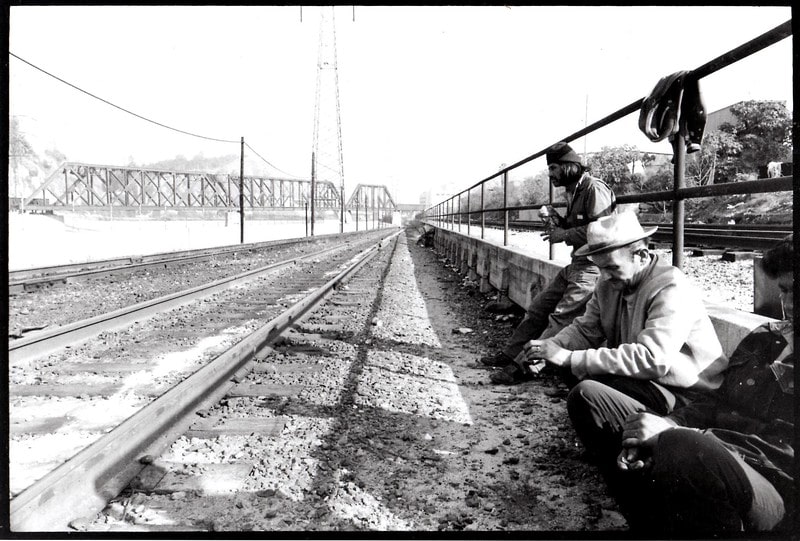
You can read more from Free’s blog here and you can enjoy his galleries here.
9. William Wegman (1943 – )
Repeatedly studying William Wegman’s work and allowing yourself to be surprised by his portrayal of personification and humor, you’ll quickly come to the conclusion that the universe offers an endless amount of possibilities even in its most singular forms. Let me explain.
Wegman is best known for his evolving series of images involving his dogs—Weimaraners. Using only his dogs as his subjects, Wegman is an extraordinary contemporary artist who works with a limited subject and has still managed to produce a tremendous body of work.
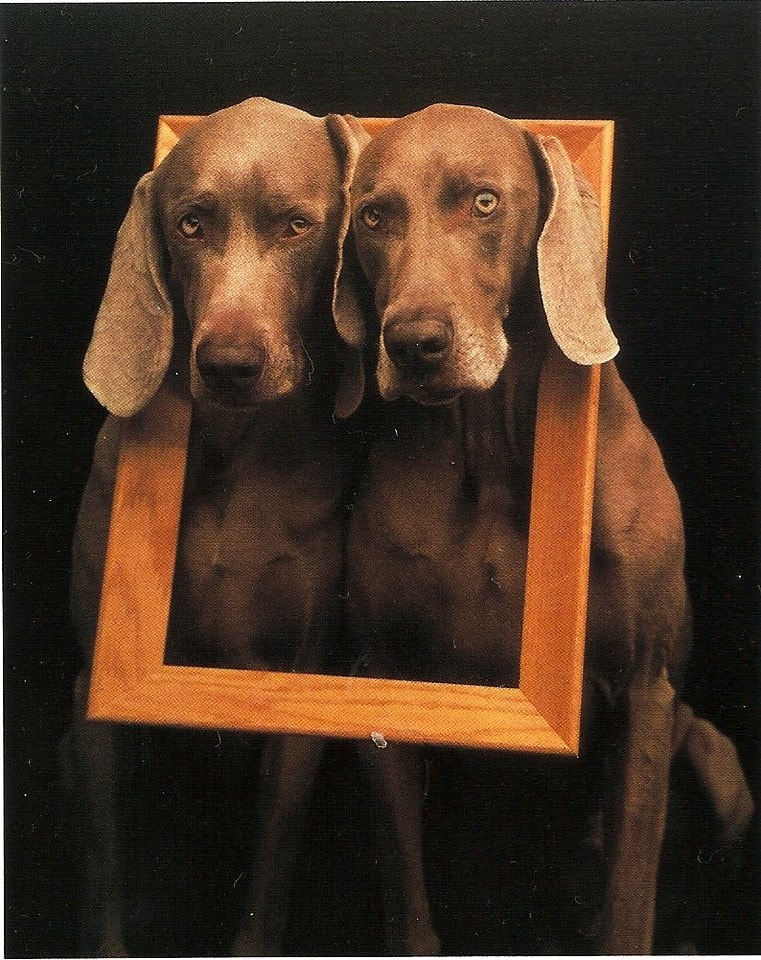
Originally intending to pursue a career as a painter, Wegman settled into photography and, by the 1970s, saw his work showcased in several galleries including the Konrad Fischer Gallery in Düsseldorf, which is near the famous Düsseldorf School of Photography. Since then, his work has been on display in numerous galleries and museums including The Museum of Modern Art (MoMA) and the Centre Georges Pompidou.
I love dogs and so does he!
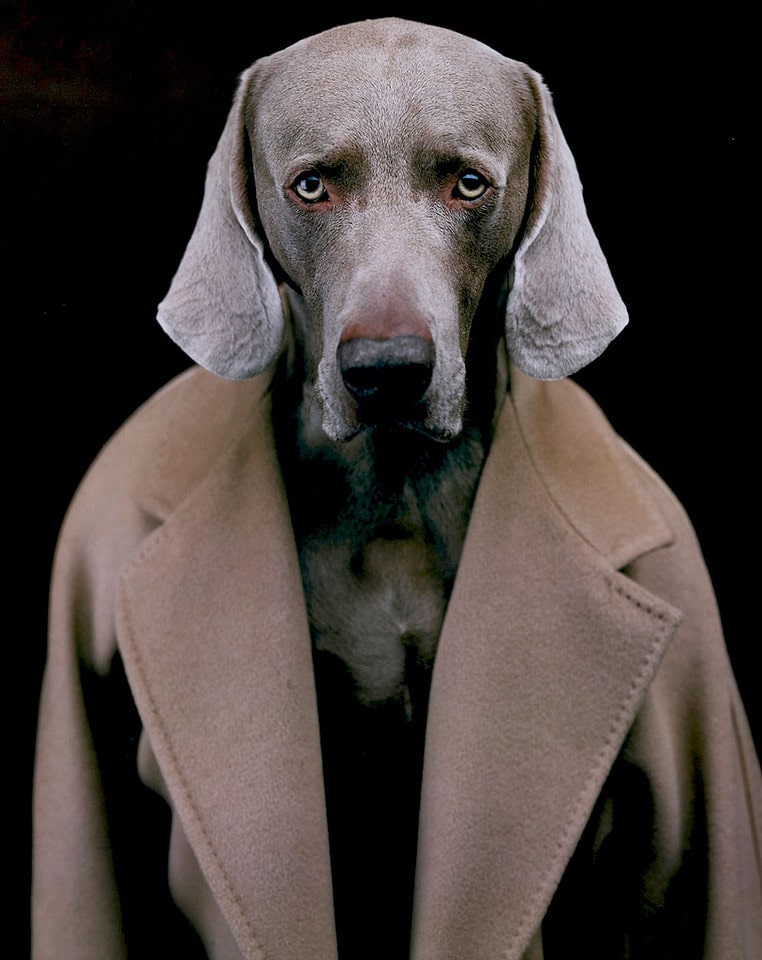
William Wegman Books
10. Robert Mapplethorpe (1946 – 1989)
Robert Mapplethorpe was an American photographer who’s known for his treatment of controversial subject matter with a highly stylized black and white medium. His work includes a broad selection of subjects from himself and celebrities to nudes and still-life images of flowers. His most controversial piece is that of New York City’s underground BDSM scene in the late 1960s and early 1970s. You can see this eerie work on the Robert Mapplethorpe Foundation website.
Apart from his controversial portraits, his work centered on still-life images of flowers—tulips, lilies, orchids, poppies and Alcatraz flowers—throughout the end of the 1970s to a few months prior to his death in 1989.

The year he was diagnosed with HIV/AIDS, he took a noticeably different photograph of dying flowers that contrasted with his typical portrayal of spotless blooms. This image serves as a delicate metaphor of his own decaying health and became a symbol of immortality in his later work. The piece is currently part of the collection at the Solomon R. Guggenheim Museum of New York.
Three of his quotes—shown here with intended poetry-like structure—reveal the ideas behind his controversial and bold body of work:
“I am obsessed with beauty. I want everything to be perfect, and of course, it isn’t. And that’s a tough place to be because you’re never satisfied”.
“Beauty and the devil are the same things”.
“When I work, and in my art, I hold hands with God”.

Robert Mapplethorpe Books
11. Ralph Gibson (1939 – )
A living American photographer is best known for his editorial work, Ralph Gibson has a knack for building a narrative with continuous undertones of the mysterious and erotic. His work is sometimes about the perfect and basic details that, when seen or unseen in context, speak volumes about the image itself.
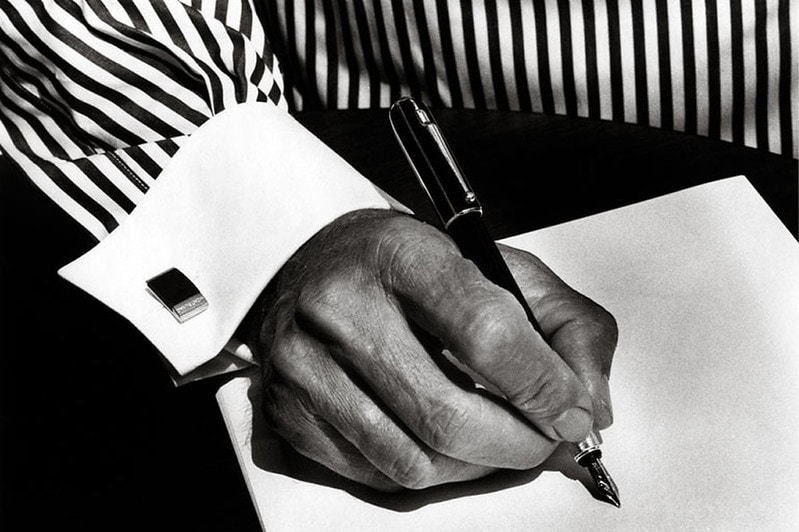
Gibson’s images often have a surreal juxtaposition that is both subtle and elegant. His frames are stellar examples of gestaltism thanks to the effect he evokes when simply showing key elements inside the frame.
Related: 10 Fascinating Photography Facts
His work is often described as a combination of the nature of street photography and the possibility of still-life. You can lose yourself in the endless river of images on his official website. Please, if you don’t know his work, treat yourself!
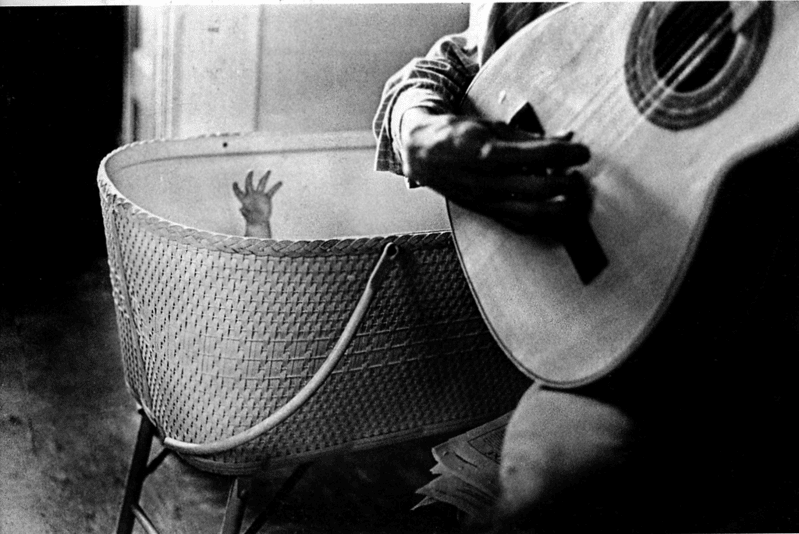
Ralph Gibson Books
12. Hiroshi Sugimoto (1948 – )
Born in Tokyo, Hiroshi Sugimoto is an active fine art photographer who currently divides his time between Tokyo and New York. His catalog of work features several series, each of which has distinct themes and similar attributes.
Given his first camera at 12 years old, he studied politics and sociology at Rikkyō University in 1974 but later retrained as an artist and earned his Bachelor of Fine Arts at the Art Center College of Design in Pasadena, California. Afterward, he settled in New York City and started working as a Japanese antiquities dealer in Soho.

During this time, he began work on his Dioramas series, which was inspired by what he saw at the American Museum of Natural History of New York. Two years later, he started the Theaters series, which is a unique and beautiful study of both the screens and the architecture of such places with the screens depicted in their true essences as dreamy, timeless and pure white.
He has worked with many subjects with some of his most renowned works recognized by his minimalist and gradient-like seascapes. They all show a symmetrical duality between the sea and sky with a carefully and perfectly captured horizon. Some of his seascapes have been shot at normal shutter speeds of 1/30 sec or 1/60 sec and retain the wavy texture of the sea while others are long exposures that show a polished-like surface of both the sea and sky.
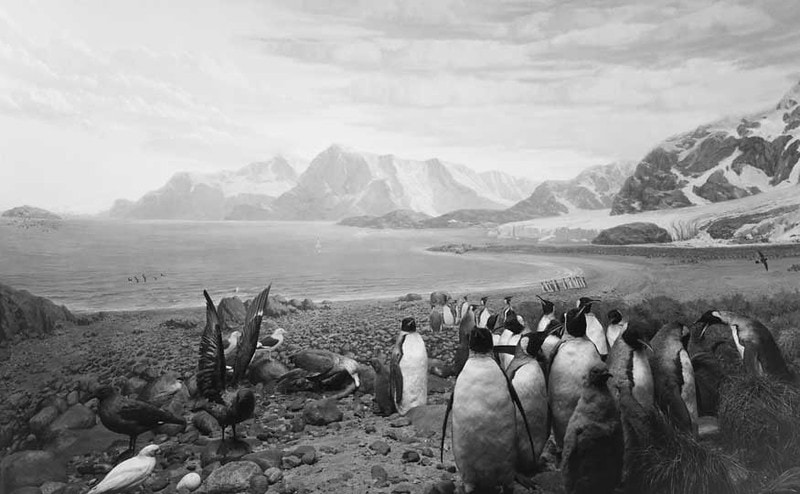
You can see most of his work in his online portfolio where he shows many different studies from still-life to thunders. You can also see some of his fine artwork at the Fraenkel Gallery.
Hiroshi Sugimoto Books
13. Fan Ho (1937 – 2016)
A great Chinese photographer and filmmaker, the world is still mourning the loss of Fan Ho after his death in 2016. Easily among the greatest, the celebrated Chinese photographer collected over 280 awards from international exhibitions and worldwide competitions since getting his start in photography in 1956.
He received a TLR Rolleiflex camera from his father at 13 years old and was instantly entranced by the artistry, which triggered his passion for photography at an early age. By the 1950s, he moved to Hong Kong and began documenting the city’s street life while building his reputation as one of Asia’s most influential photographers as well as one of the top photographers in the world.

He visited a dozen universities in Taiwan and Hong Kong as a visiting professor and taught students the art of filmmaking and photography. What a gift for students to learn from such a passionate and talented photographer and filmmaker! He authored five books and talked about his history and philosophy behind photography and filmmaking here.
Three of his films received the Official Selection of the prestigious International Film Festivals of Cannes, Berlin and San Francisco and five of his films belong to the Permanent Collection of the National Film Archives in Taiwan and Hong Kong.
His cultural background made his style incredibly unique, lyrical, dramatic and poetic. Today, many of his amazing street photographs can be found on his official website.
Fan Ho Books
14. Andreas Gursky (1955 – )
A German photographer who studied at the famous Kunstakademie Düsseldorf between 1981 and 1987, Andreas Gursky continued to develop his voice long after he finished his studies and eventually gained fame among critics. By the end of the 1980s, he enlarged his images into what is now considered mural sizes, which is part of his current fame. Since 1992, he’s explored the endless possibilities of digital images and has worked in the digital realm ever since.
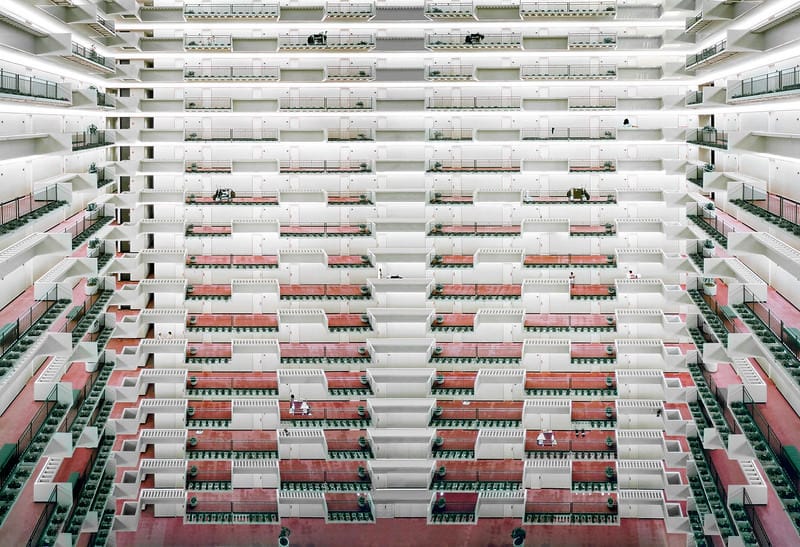
In recent years, Gursky skyrocketed to fame in the industry by selling not one, but two of the most expensive photographs ever recorded in history. His print, Rhein II, sold for $4,338,500 USD at Christie’s in New York on November 8, 2011. In 2013, the Chicago Board of Trade III (1999-2009) was sold for 2.2 million pounds. Because of this, there is now a huge debate about the value of art.
The short, accessible perspective of his work offers an elevated vantage point that enables viewers to see another perspective of everyday situations like his famous 99 Cent II. He is drawn to large, anonymous, manmade spaces like office lobbies, stock exchange floors, and the interiors of big-box retailers. Because of this, his images require meditation and revisiting to fully understand the concept behind his portraiture of globalization.
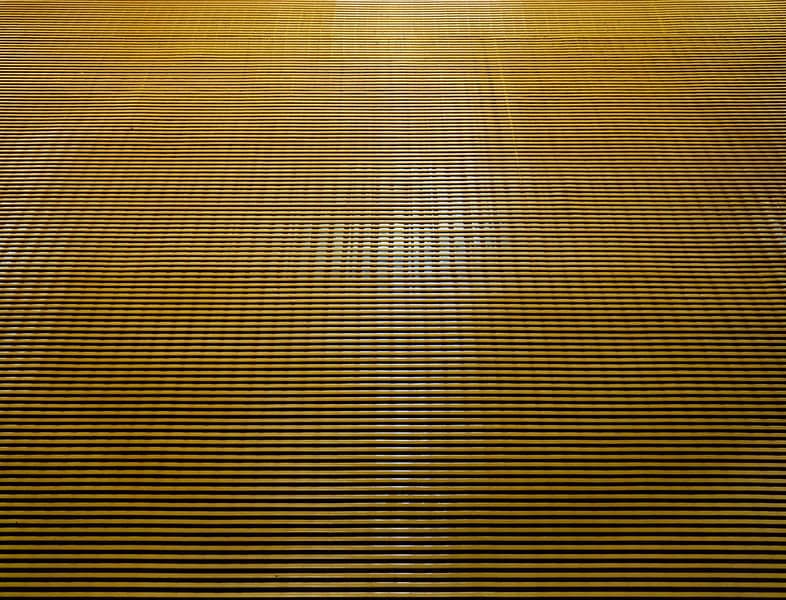
Another important image that shows his fascination with man-made spaces and globalization is Paris, Montparnasse, 1993.
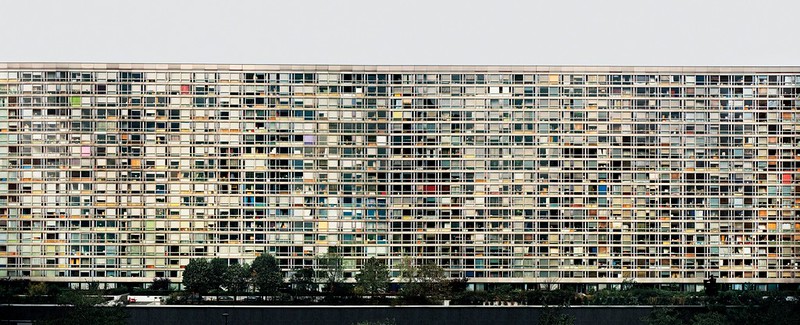
Andreas Gursky Books
Famous Modern Photographers | Conclusion
These famous modern photographers have helped shape contemporary photography and will continue to influence other photographers for years. They have pushed the boundaries of what is possible with a camera, and their innovative techniques have inspired others to do the same.
If you’re interested in photography, check out their work – you won’t be disappointed.
Articles Related to “14 Famous Modern Photographers and Their Photos“







